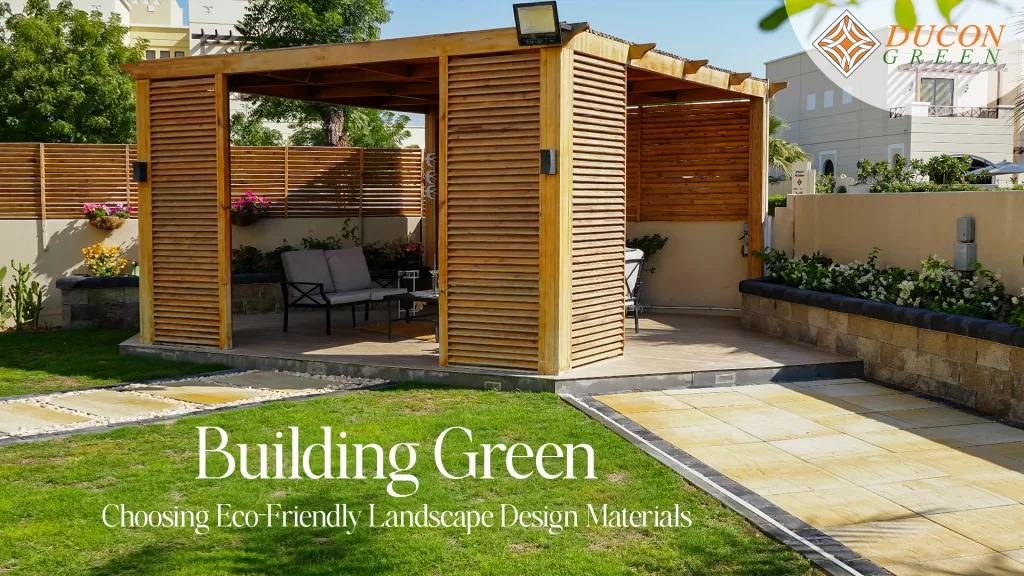
The advantages of sustainable
landscaping for the environment
Sustainable landscaping techniques not only look good but also have a lot of positive environmental effects. By using environmentally friendly techniques, sustainable landscape management seeks to lessen the damaging effects of landscape design on the environment. These actions lead to a healthier and more sustainable future by improving biodiversity and conserving water.
“Sustainable landscaping is the process of creating and maintaining landscapes that are not only aesthetically pleasing but also contribute to the health of the environment by using environmentally responsible techniques and practices.” – Ducon Green
Sustainable landscaping techniques not only look good but also have a lot of positive environmental effects. By using environmentally friendly techniques, sustainable landscape management seeks to lessen the damaging effects of landscape design on the environment. These actions lead to a healthier and more sustainable future. Sustainable landscaping contributes to sustainable landscape management, which is one of the biggest environmental advantages. Reducing the quantity of garbage sent to landfills and promoting soil fertility and health are two benefits of using eco-friendly landscaping techniques like mulching and composting. Additionally, by using these methods, fewer chemical pesticides and fertilizers—which can damage the environment and taint water sources—are required.
Including Eco-Friendly Design Features
Including environmentally friendly design components is a cornerstone of sustainable landscaping in building design. By adding to the aesthetic appeal of the landscape, these components seek to lessen the negative effects that construction projects have on the environment. Features like green roofs, which employ plants to insulate buildings and reduce storm water runoff, are examples of nature-friendly design elements. Permeable paving is another useful component of sustainable landscape design. By allowing water to percolate through the surface and into the underlying soil, this alternate paving method lessens the likelihood of flooding and runoff. In addition to enhancing plant growth and soil quality, permeable paving can create a more visually appealing and sustainable landscape.
Planning a Sustainable Landscape:
Site planning is an important component of sustainable landscaping since it helps create an environmentally responsible design that works well. We may mitigate the adverse effects of our structures on the environment by integrating ideas of nature-friendly building design into the process of site planning.
“A holistic approach to building design is necessary for sustainable site planning, taking into account the ecological impact of the design on the surrounding environment.”
All things considered, integrating sustainable site planning ideas into landscaping design can significantly lessen the environmental impact of our structures. Through the adoption of principles of nature-friendly design, we can work towards a more sustainable and healthful future for the planet and ourselves.
From the Customer
For instance, “Our building has a lovely green area that offers the ideal setting for us to relax and connect.” It’s a wonderful location for yoga, picnics, and just taking in the scenery. Since we began to appreciate this green area as a community, it has become stronger“.
In summary, sustainable landscaping has a purpose beyond visualization in building design. It promotes community involvement and well-being, increases biodiversity and ecosystem services, and has a host of other positive effects on the environment.
We may build environmentally friendly landscaping that encourages water and energy conservation by employing sustainable landscape techniques and nature-friendly design components, as well as by comprehending the fundamentals of sustainable construction and architecture. Carefully choosing the plants we use can have a good effect on the environment and is essential to sustainable landscape management. We can build a healthier, more environmentally friendly future that benefits both people and wildlife with the help of sustainable site planning. So let’s adopt green building design ideas and eco-friendly methods to create a sustainable landscape that we can all enjoy.
